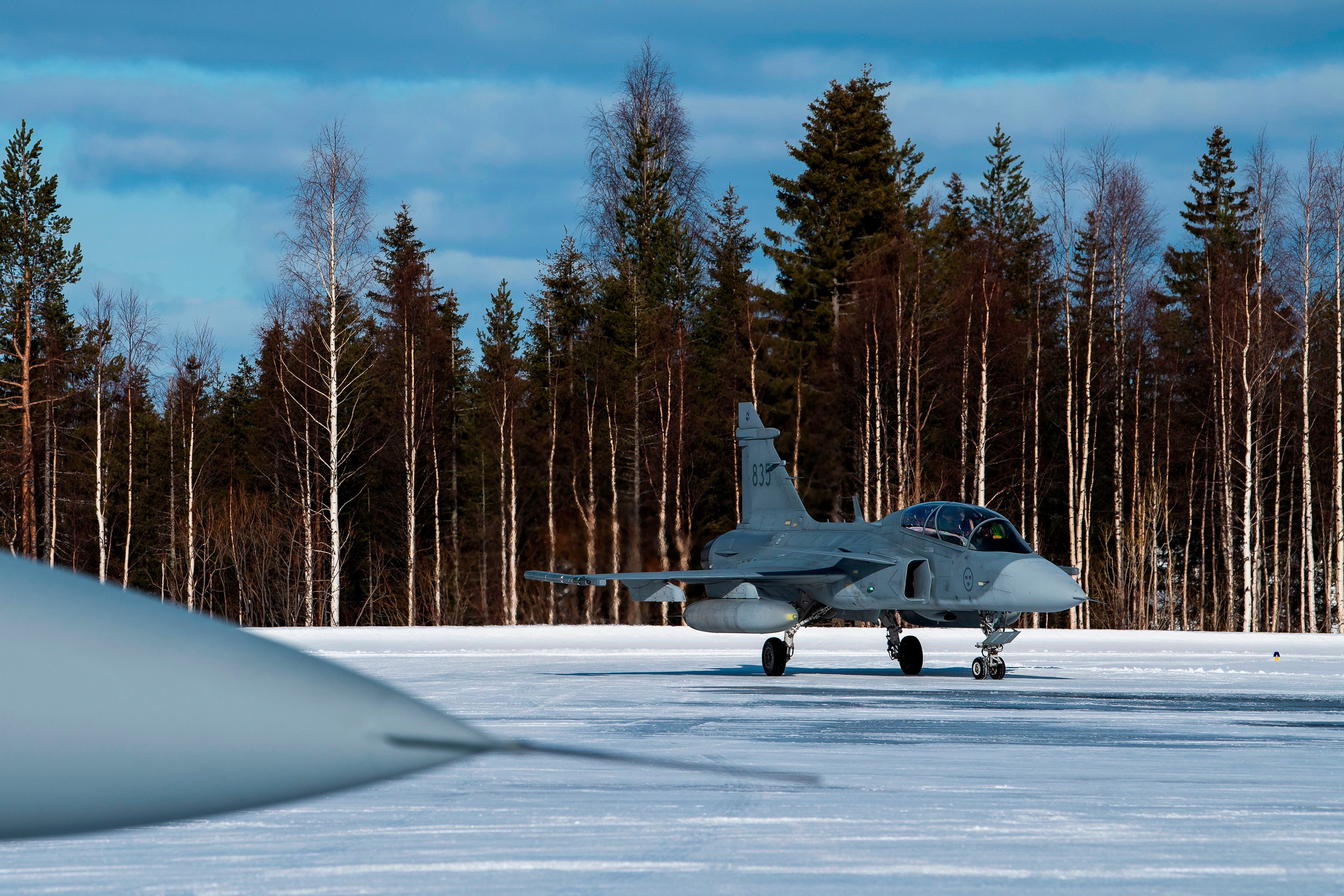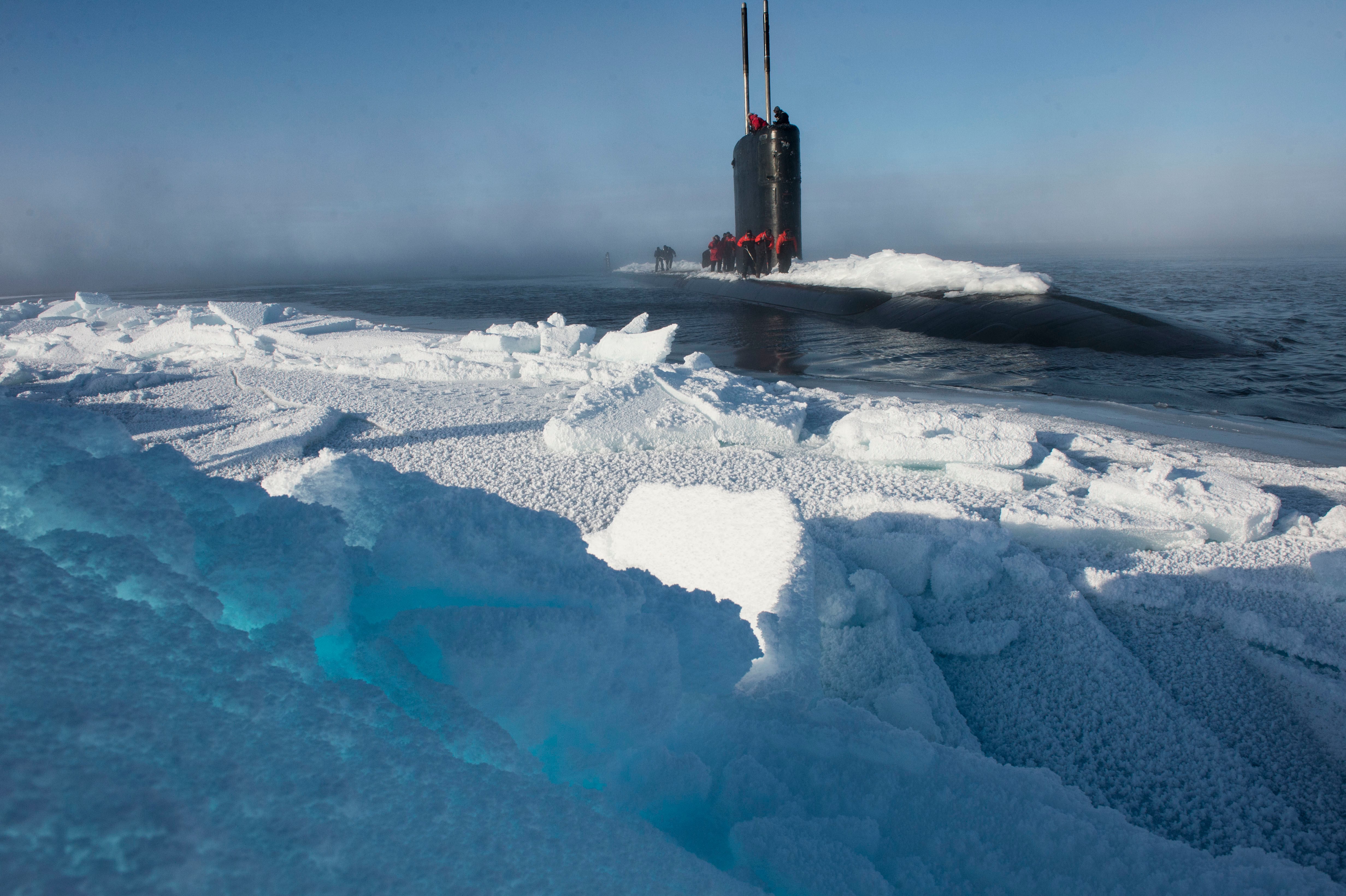HELSINKI — The Nordic countries are pushing to deepen trans-Atlantic defense collaboration with the United States in the High North amid fears that the Trump administration’s mixed messages on NATO could lead to a diminished presence by the alliance in Northern Europe.
Concerns over NATO’s capacity to counter potential threats by Russia in the strategic High North and Baltic Sea regions has reignited interest by the Nordic countries, led by Sweden, to explore the development of joint naval, air and mechanized rapid-response infantry units. Nordic leaders have been tentatively discussing the possible formation of common capacities since 2016. However, little in terms of real substantive plans have emerged from the cross-border dialogue to date.
“Nordic collaboration in defense continues to evolve. We are looking to find new ways to cooperate in practical areas that can deliver improved security in the High North and Baltic Sea areas,” said Antti Kaikkonen, Finland’s defense minister.
Non-aligned Arctic states Sweden and Finland have already conducted bilateral talks to consider the formation of joint fighter squadrons and Arctic-specific, modular-designed, rapid-response brigades. The long-term expectation is that neighboring NATO states Denmark and Norway would join the group under the umbrella of the existing Nordic Defense Cooperation pact.
Of the four Nordic defense partners, Norway is the most enthusiastic supporter for an enlarged role for U.S. and NATO forces in the Arctic High North.
Faced with Russia’s continued scaling-up of its defense infrastructure on the Kola Peninsula, coupled with a surge in multi-branch exercises by Russian forces closer to its borders, Norway’s immediate response has been to raise spending to bolster military preparedness and capacities.
RELATED

Aside from a strong desire to see the United States play a more robust role in the security of the region, Nordic governments are also interested in deepening defense cooperation with Germany.
Nordic defense ministers conducted a video-link conference with the German Defence Minister Annegret Kramp-Karrenbauer on June 18. The meeting focused on key security and defense issues, including regional security and future challenges in maintaining a healthy trans-Atlantic alliance.
“Germany is an important actor and partner not alone in Europe, but also in the Baltic Sea region. We share common interests regarding the security situation in Northern Europe. This is a well-developed cooperation we want to expand,” said Peter Hultqvist, Sweden’s defense minister.
For Norway, the potential threats posed by Russia to long-term security in the High North regions is encapsulated in the government’s Long-Term Defense Plan 2020-2024 (LTDP) for Norway’s Armed Forces, released on April 17. The 123-page document refers to Russia a total of 58 times in the context of presenting a military threat and provoking instability in the High North and Baltic Sea theaters.
The plan aspires to combine Norwegian capability working in partnership with a strong commitment and presence by the U.S. and NATO to counter any future security threat by Russia in the High North, said Norwegian Defence Minister Frank Bakke-Jensen.
"Norway needs to have a regular and predictable presence in the High North. We want to ensure stability and retain the influence we have in the security development in our own neighborhood. We are strengthening both our military capacity on the one hand and cooperation with NATO and the US on the other," Bakke-Jensen said.
The LTDP document observes that Russia currently poses a bigger threat to regional security than has been the case for several decades. Significantly, the Norwegian government is also busy improving channels of communication between Oslo and Moscow in order to enhance its working relationships with Russia’s leaders and military top brass.
“The potential of Russia’s military power has significantly changed in the last number of years. The country’s behavior has become increasingly assertive and venturous. Russia is prepared and willing to apply a wide specter of military and non-military means to fulfill its goals,” the LTDP report concludes.
RELATED

In practical terms, the plan adds $1.73 billion to the Norwegian Armed Forces, or NAF, budget over the next 8-years. The extra monies will be used for major capital investment programs to reinforce the overall capability and fire-power of the NAF’s Arctic-based Brigade North.
Critical procurements for the NAF will include new armored combat vehicles and long-range precision weapons. A new mobile unit dedicated to chemical, biological, radioactive and nuclear defense will be established.
Importantly, Norway’s ramped-up military spending addresses capacity shortcomings in core areas naval and air-defense strength. To this end the NAF will add four new-build submarines to its naval fleet by 2030. The Army will upgrade its existing NASAMS air-defense system with modern sensors and acquire a long-range air defense system to counter threats from short-range ballistic missiles. The NAF will also form a new extreme climate maritime special force unit called the Special Operations Task Group.
In the unified Nordic defense domain, national governments support the expansion of more regular joint training and multi-branch exercises in cooperation with NATO in the High North and the Baltic Sea theaters.
In May, Swedish JAS 39 Gripen fighters joined Norwegian F-35s as part of a wider, long-range strategic bombers task force mission that included American B-1B Lancers from the 28th Bomb Wing out of Ellsworth Air Force Base in South Dakota.
The May 20 exercise was notable in that it was the first time US strategic long-range bombers participated in exercises over Swedish airspace. For the Swedish Air Force, the mission included refueling of JAS 39 Gripens from American KC-135 Stratotankers.
Although not a NATO-member, Sweden signed a host-country agreement with NATO in 2014 allowing Allied Forces to conduct joint training exercises in the country.
“Exercises like these are important. They enable us to demonstrate interoperability and our role as a reliable and relevant partner. The trans-Atlantic link and combined exercises with U.S. air units serve to increase our capability and create security and stability in the High North and Baltic Sea regions,” said Maj. Gen. Carl-Johan Edström, the Swedish Air Force’s commander.
Gerard O'Dwyer is the Scandinavian affairs correspondent for Defense News.








